
Seminars
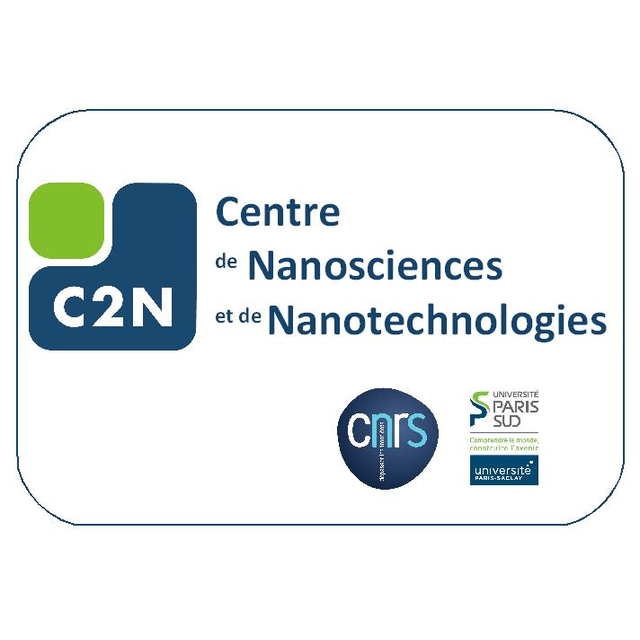
Cavity optomechanics with exciton-polaritons condensates
Centre de Nanosciences et de Nanotechnologies, A003, PalaiseauSeminars
Hybrid systems combining both cavity electrodynamics and cavity optomechanics have been theoretically proposed, with predictions of cooling at the single-polariton level. Cavity optomechanics with exciton-polariton Bose-Einstein condensates opens intriguing perspectives, particularly in view of the potential access to an optomechanical strong-coupling regime, and the possibility of using vibrations to actuate on such a macroscopic quantum fluid. These ideas are at the backbone of our main research in collaboration with the Paul Drude Institut in Berlin. Here I will discuss some of the collaboration experimental and theoretical latest results in which phonon-lasing [1], a parametric oscillator for phonons [2,3], and polariton lattices’ neighbor sites showing phonon-induced asynchronous locking [4], are demonstrated.
[1] Polariton-driven phonon laser, D. L. Chafatinos, A. S. Kuznetsov, S. Anguiano, A. E. Bruchhausen, A A. Reynoso, K. Biermann, P. V. Santos, A. Fainstein, Nat. Commun. 11, 4552 (2020).
[2] Optomechanical parametric oscillation of a quantum light-fluid lattice, A. A. Reynoso, G. Usaj, D. L. Chafatinos, F. Mangussi, A. E. Bruchhausen, A S. Kuznetsov, K. Biermann, P. V. Santos, A. Fainstein, Phys. Rev. B 105, 195310 (2022), Featured in Physics and Editors' Suggestion.
[3] A parametric Oscillator for phonons, M. Stephens, Physics 15, s20 (2022).
[4] Metamaterials of Fluids of Light and Sound, D. L. Chafatinos, A. S. Kuznetsov, P. Sesin, I. Papuccio, A. A. Reynoso, A. E. Bruchhausen, G. Usaj, K. Biermann, P V. Santos, A. Fainstein, arXiv:2112.00458 (2021)
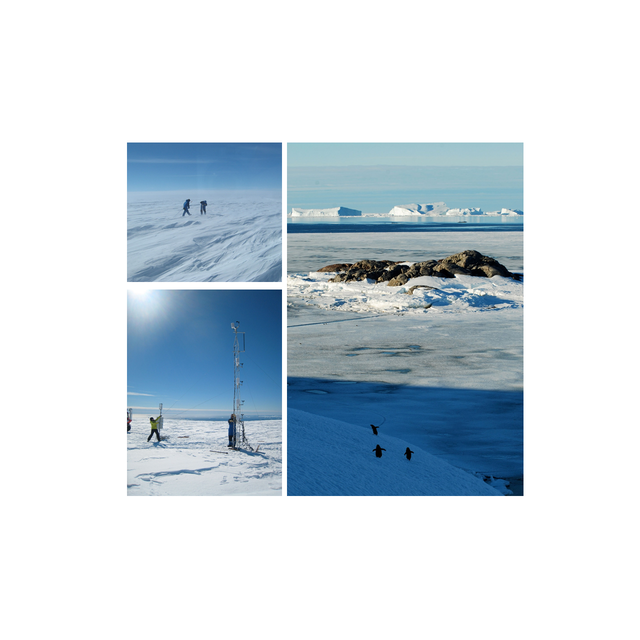
The Antarctic in the climate system: evolution of the atmosphere-ocean-ice coupling from last to next century.
Centre de Nanosciences et de Nanotechnologies, Amphithéâtre, PalaiseauSeminars
Until the 2000s, it was assumed that the Antarctic ice sheet, because of its large size, would not contribute to sea level on a century scale. Satellite observations have dramatically changed this perspective by revealing that Antarctica is rapidly losing ice. I will present our most recent understanding of the atmosphere-ocean-ice interactions that led to the recent changes in Antarctica, and outline why Antarctica now represents the most uncertain contribution to sea level rise at the end of the 21st century. Finally, I will take a step back to present how we are reconstructing past climate variability with a combination of ice cores, innovative instrumentation and atmospheric modeling.
Cécile Agosta is a climate scientist specialized in Antarctic studies and snow-atmosphere interactions. She obtained her PhD at the Institut des Géosciences de l'Environnement (Université de Grenoble, France), and continued her researches at the University of Liège, Belgium, where she specialized in polar atmosphere modelling. She is now a researcher at the Laboratoire de Sciences du Climat et de l’Environnement (LSCE, Paris-Saclay, France) in an experimental team to interpret Antarctic water vapor and snow isotopic composition with a model-data approach.
Seminar given in the framework of the EUGLOH Alliance/ SMART-22 project
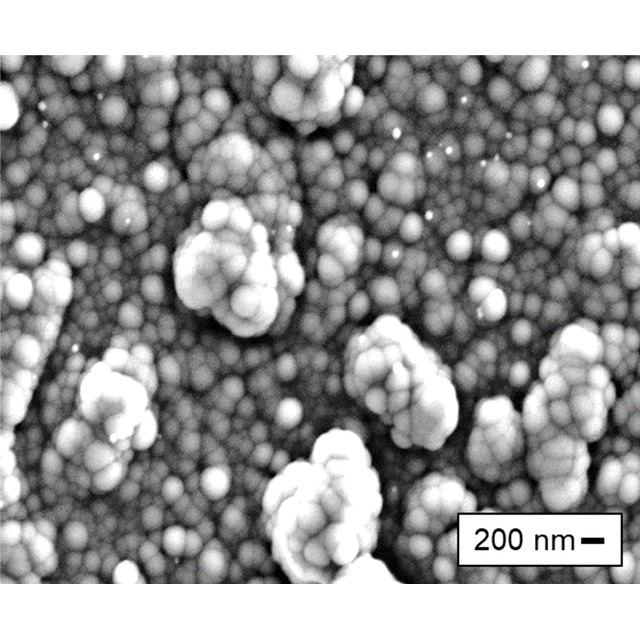
Nanoparticle formation in low-pressure microwave plasma.
Centre de Nanosciences et de Nanotechnologies, Amphithéâtre, PalaiseauSeminars
In this talk, we give an overview of the main mechanisms occurring during nanoparticles formation in non-thermal plasmas especially when microwave excitation is used. This work aims at addressing questions about the formation of carbon or tungsten dust nanoparticles in fusion devices (tokamak).
The kinetic pathways leading to nanoparticle will be described from experimental observations using complementary gas-phase spectroscopic diagnostics coupled with ex-situ analyses of nanoparticle size distribution, density and morphology. The discussion based on experimental results will be supported by briefly introducing some models developed specifically to get insights in the complex physico-chemistry involved in nanoparticle formation in non-equilibrium plasmas.
Karim Ouaras is a CNRS researcher at LPICM, working in plasma processing for III-V epitaxy. He obtained his PhD in plasma science from University Sorbonne Paris Nord (LSPM lab) in 2016. After his PhD, he did several post-docs around plasma physics, gas phase spectroscopy and material science (carbon, tungsten, silicon, polymers), successively at University Paris Sud - Orsay; LPICM; Stanford University and University of Cambridge). To date, he has published 20 peer-reviewed articles.
Figure caption: Example of a SEM micrograph showing carbon nanoparticles deposited on Si substrate using Ar:C2H2 plasma process.
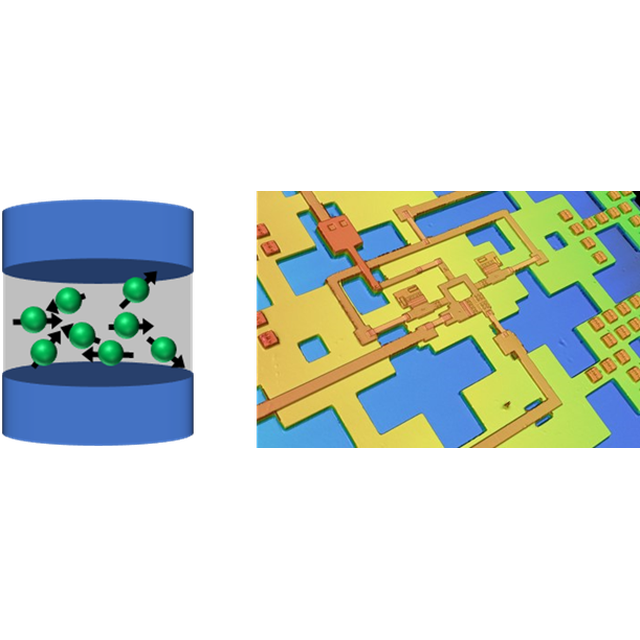
Magnetic Josephson junctions for artificial synapses
Centre de Nanosciences et de Nanotechnologies, Amphithéâtre, PalaiseauSeminars
The performance of artificial intelligence (AI) technologies has improved significantly over the last decade in such a way that AI is now everywhere in our daily life via software neural networks. However, this continual growth in computational performance of these networks comes with large increases in the computational time and energy needed to train them. Developing AI at the hardware level has the potential to bend this curve and provide fast and lower energy computing. In this talk, I will present a new hybrid magnetic-superconducting device that can be used as an artificial synapse in neuromorphic circuits. The device is a magnetic Josephson Junction that consists of a barrier of magnetic nanoclusters between two Nb electrodes. The critical current of these junctions can be tuned by varying the magnetic order of the clusters, which can be used to perform synaptic weighting. I will describe the properties of the MJJ and show that its synaptic properties can be obtained in different material systems with an energy cost as low as 10-19J. Finally, I will present circuit simulations where MJJs are included in a neural network for image recognition operating at speeds over 100 GHz, and show some preliminary experimental validation of the simulations..
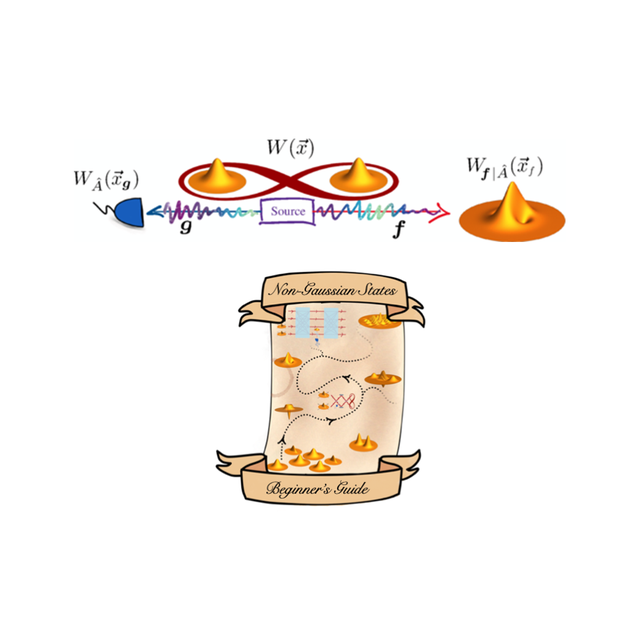
Non-Gaussian states and their role in reaching a quantum computational advantage
Centre de Nanosciences et de Nanotechnologies, Amphithéâtre, PalaiseauSeminars
Gaussian states appear naturally in quantum optics under the guise of coherent, squeezed, or thermal states. In particular squeezing is an important resource for the deterministic generation of large entangled states useful for quantum computation. Yet, Gaussian states have an important limitation: all Gaussian measurements on Gaussian states can be efficiently simulated i.e nothing specifically quantum is happening. In many quantum technologies, we thus require non-Gaussian states.A common route to create non-Gaussian states in quantum optics is by performing non-Gaussian measurements (often photon counting) on parts of a Gaussian state. I will therefore present a general way to describe such conditionally generated states. The resulting set of non-Gaussian states is vast compared to the well-characterized corpus of Gaussian states and it is thus interesting to quantify this non-Gaussianity. I will argue in favour of negativity of the Wigner function as a figure of merit, based on its important role in sampling problems. I will then circle back to the conditional preparation scheme to show how Wigner negativity is fundamentally intertwined with quantum correlations.
Ref : https://doi.org/10.1103/PRXQuantum.2.030204
Mattia Walschaers got his PhD from the universities of Freiburg (Germany) and Leuven (Belgium) for a cotutelle project, supervised by Andreas Buchleitner and Mark Fannes. His work initially focused on the role of quantum effects in photosynthesis, where he developed analytically solvable toy models to better understand the role of disorder in coherent transport of photosynthetic excitons. Later on, his interest shifted to many-particle systems and many-particle interference a phenomenon which induced by indistinguishability of quantum particles. This ultimately led to the development of an experimentally implementable statistical benchmark for boson sampling.
The resulting dissertation was published as a book in the Springer Theses series, and it was also one of the four nominees for the SAMOP dissertation prize of the German Physical Society. Between 2016 and 2019 , Mattia was a post-doctoral researcher in multimode quantum optics group of the Laboratoire Kastler Brossel, where his research interests shifted to continuous-variable quantum optics and quantum information where he studied experimentally feasible non-Gaussian states and developed a general framework to study multimode photon addition and subtraction. Mattia has been a CNRS researcher at the LKB since 2019 where he is studying multimode non-Gaussian quantum states, quantum correlations in CV systems, quantum batteries, complex quantum networks, and applications of machine learning in quantum experiments
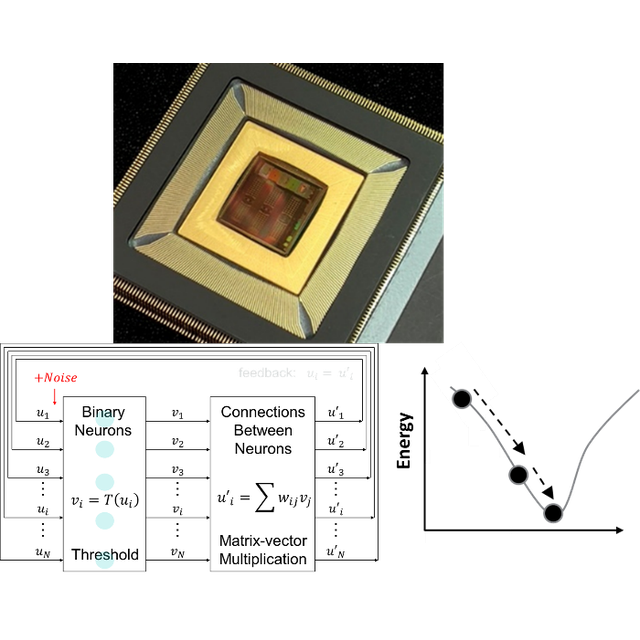
Combining brain-inspired principles and emerging device technologies to build new computing systems
Centre de Nanosciences et de Nanotechnologies, Amphithéâtre, PalaiseauSeminars
After approximately 100 years of engineering computers, humans have reached performance that rivals biological brains in many ways, while exceeding it in sheer number-crunching capacity. Yet, we took a very different path from biology, and there remains a huge advantage in energy-efficiency for biological information processing systems. I will discuss our work to copy some of biology's tricks to build more efficient computers and tackle some of today’s hardest problems. This means re-visiting the design of computers from the bottom (devices) all the way up (algorithms). In one area, we are exploring computers augmented with “associative memories” for storing and retrieving complex patterns at low area and power consumption. Such an alternative to RAM speeds-up operations in genomics, security, and tree-based machine learning. In another area, we use the stochastic analog operations in neural network dynamics to more quickly find the solutions to intractable Optimization problems, forecasting significant improvement over traditional and emerging compute technologies. Finally, if time permits, I will describe the precision challenges that computing in analog systems poses, and the potential for methods such as analog error-correcting coding.
John Paul Strachan
Peter Grünberg Institute (PGI-14), Neuromorphic Compute Nodes, Forschungszentrum Jülich GmbH, Jülich, Germany,RWTH Aachen University, Aachen, Germany
John Paul Strachan directs the Peter Grünberg Institute on Neuromorphic Compute Nodes (PGI-14) at Forschungszentrum Jülich and is a Professor at RWTH Aachen. Previously he led the Emerging Accelerators team as a Distinguished Technologist at Hewlett Packard Labs, HPE. His teams explore novel types of hardware accelerators using emerging device technologies, with expertise spanning materials, device physics, circuits, architectures, benchmarking and building prototype systems. Applications of interest include machine learning, network security, and optimization. John Paul has degrees in physics and electrical engineering from MIT and a PhD in applied physics from Stanford University. He has over 50 patents, has authored or co-authored over 90 peer-reviewed papers. He previously worked on nanomagnetic devices for memory for which he was awarded the Falicov Award from the American Vacuum Society, and has developed sensing systems for precision agriculture in a company which he co-founded.
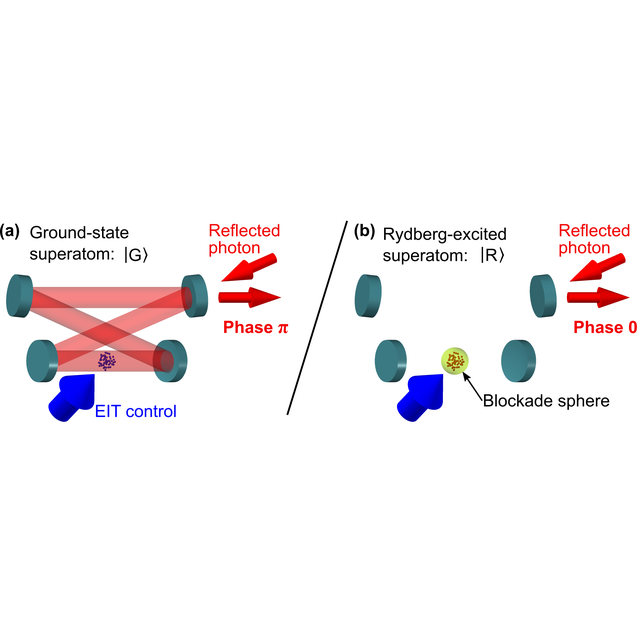
Intracavity Rydberg superatom for optical quantum engineering
Centre de Nanosciences et de Nanotechnologies, Amphithéâtre, PalaiseauSeminars
One major road towards the development of efficient photonic quantum technologies would be to rely on unitary deterministic photon-photon interactions. However, optical photons do not interact naturally. One thus has to use light-matter interactions to find ways towards effective photon-photon interactions. In the last decade, two approaches have been developed to achieve strong photon-photon interactions with cold atoms. On one side, experiments featuring a single atom strongly coupled to a cavity have a strong nonlinearity enabling the realization of quantum logic gates between two photons. On another side, experiments mapping photons onto Rydberg excitations in a cold atomic gas can also achieve strong photon-photon interactions. Nevertheless, both approaches are bounded by either technical or physical limits, keeping them far from ideal unitary deterministic photonic interactions.
In a novel apparatus, we combine these two approaches to overcome their limitations. I will present the first building blocks for quantum engineering of light with an intracavity single Rydberg superatom. We implement a coherent control of this superatom via a two-photon Rabi driving. The state of the superatom can be optically detected via the cavity transmission with a 95% efficiency. Finally, we demonstrate that our coupled system induces a 180° phase shift on the light reflected off of the cavity dependent on the superatom’s state. This 180° phase rotation, together with the coherent control and the single-shot state detection, is a key ingredient for the implementation of unitary deterministic photon-photon interactions, paving the way towards quantum optics applications.
Sébastien Garcia worked on the development of fiber interfaces between single atoms and single optical photons during his PhD under the direction of Prof. Reichel at Laboratoire Kastler Brossel, Ecole Normale Supérieure (2011-2015). He did his first postdoc at Quantum Device Lab of Prof. Wallraff at ETH Zurich, mostly focusing on the detection of Rydberg atoms with superconducting microwave cavities (2016-2018). He is now a postdoc at College de France in the group of A. Ourjoumtsev. Here, his researches are dedicated on one side to, and on the other side to the realization of photon-photon interactions via Rydberg atoms in an optical cavity.
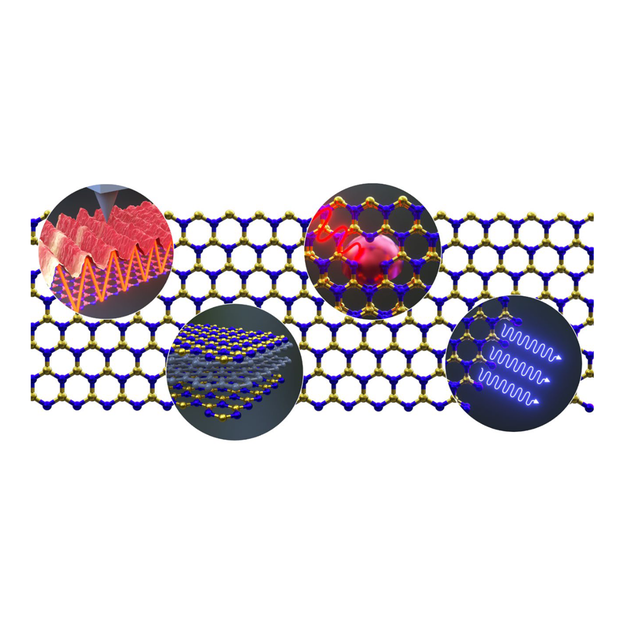
Quantum Nanophotonics with Hexagonal Boron Nitride
Centre de Nanosciences et de Nanotechnologies, Amphithéâtre, PalaiseauSeminars
Engineering robust solid-state quantum systems is am ongst the most pressing challenges to realize scalable quantum photonic circuitry. While several 3D systems (such as diamond or gallium arsenid) have been thoroughly studied, solid state emitters in two dimensional (2D) materials are still in their infancy.
In this presentation I will discuss the appeal of an emerging van der Waals crystal – hexagonal boron nitride (hBN). This unique system possesses a large bandgap of ~ 6 eV and can host single defects that can act as ultra -bright quantum light sources. In addition, some
of these defects exhibit spin dependent fluorescence that can be initialised and coherently manipulated. In this presentation I will discuss in details various methodologies to engineer these defects and show their peculiar properties. Furthermore, I will discuss how hBN crystals can be carefully sculpted into nanoscale photonic resonators to confine and guide light at the nanoscale. Taking advantage of the unique 2D nature of hBN, I will also s how promising avenues to integrate hBN emitters with silicon nitride photonic crystal cavities. All in all, hBN possesses all the vital constituents to become the leading platform for integrated quantum photonics. To this extent, I will highlight the challenges and opportunities in engineering hBN quantum photonic devices and will frame it more broadly
in the growing interest with 2D materials nanophotonics.
Professor Igor Aharonovich received his PhD in 2010 from the University of Melbourne and spent two years in Harvard as a postdoctoral researcher in the group of Prof Evelyn Hu. In 2013 Igor returned to Australia and joined the University of Technology Sydney (UTS) where is currently a full Professor and the UTS node director of the ARC Centre of Excellence for Transformative Meta-Optical Systems.Igor’s group is focusing on exploring single emitters in wide band gap semiconductors, such as diamond and more recently hexagonal boron nitride. His group is also interested in innovative approaches for nanofabrication of nanophotonics devices for quantum circuitry. But most importantly – Igor’s group has members from 11 different countries which forms a vibrant and a dynamic environment.Igor received numerous international awards and recognitions including the 2017 Pawsey medal from the Australian Academy of Science, 2019 CN Yang Award – honors young researchers with prominent research achievements in physics in the Asia Pacific region and the 2020 Kavli foundation early career lectureship in materials science. He was also elected as a fellow of the Optical Society (class 2021).
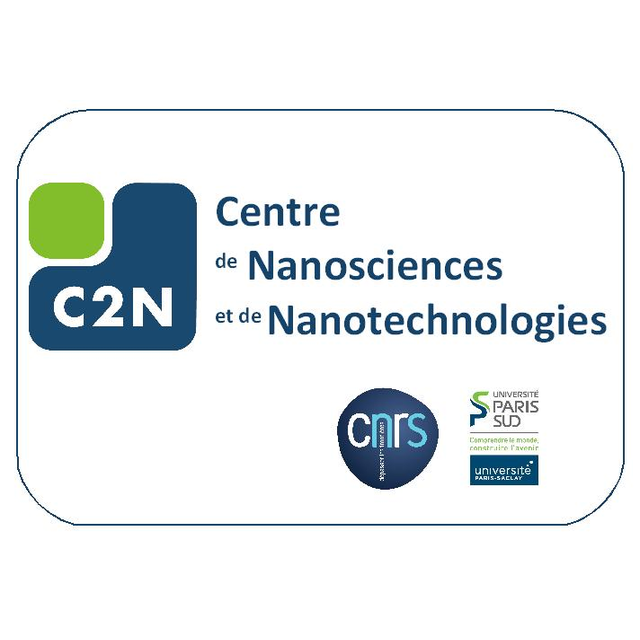
Shaping Spectral Entanglement
Centre de Nanosciences et de Nanotechnologies, Amphithéâtre, PalaiseauSeminars
The photon entanglement of the spectral degree of photons is a spontaneous result of the nonlinear process of parametric down-conversion. It's details are a result of the specific phase-matching conditions and the original pump spectral properties. I will present how by controlling both of these parameters, the entanglement properties of down-converted biphotons can be engineered. Preliminary results will also be presented.
Hagai Eisenberg is currently an Associate Professor at the Racah Institute of Physics at the Hebrew University of Jerusalem and the Chief Scientist and co-founder of QuantLR - a Jerusalem based Quantum Cryptography startup. He is a graduate of the Technion and the Weizmann institute, after which he spent two and a half years of post-doc research in UC Santa-Barbara, before joining the Hebrew University in 2005. His field of research is Quantum Optics, spanning subjects from the foundations of Quantum Physics to the applications of contemporary Quantum Technology. In his lab, he seeks new ways to generate complex quantum states of the basic elements of light – photons. These states can serve in enhanced quantum communication protocols as well as be the basis for simple quantum computational tasks. In addition, he looks for novel methods to enhance the accuracy of optical measurements using quantum mechanics.
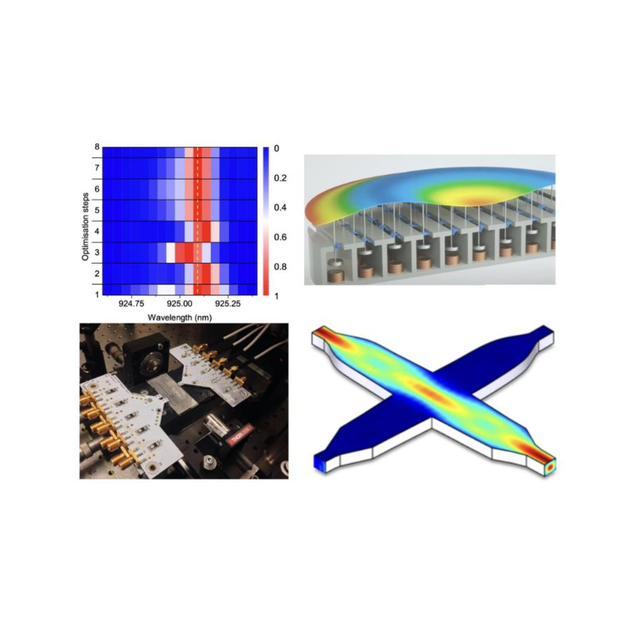
Rise of the Machines: Making better photons by getting rid of experimentalists
Centre de Nanosciences et de Nanotechnologies, Amphithéâtre, PalaiseauSeminars
There is now an enormous opportunity to interconnect quantum components together into complex, short-and long- range
networks of sensing, communication, and computational elements. Photons are a natural choice for networking quantum
technologies as their quantum nature survives at room temperature and long distance propagation is possible, either via optical
fibre or through free space.
Here we explore using machine learning (ML) to optimise production, coupling, routing, and circuitry for single photons. Our single-photon source platform is resonant excitation of individual quantum dots coupled to a micropillar cavity. Multiphoton suppression in the
quantum dot emission—as well as single-photon indistinguishability and brightness—are directly influenced by the spatiotemporal
characteristics of the optical excitation pulses. We use ML techniques to tailor the excitation laser pulse properties in real-time,
significantly reducing the search time for optimal parameters. We also employ ML to control a deformable mirror, correcting for
aberration on the single-photon wavefront field to maximise the coupling between the source output and a single-mode fibre. This
combination provides a toolbox for enhancing the performance of any solid-state single-photon source.
Photonic integrated circuits (PICS) will be essential for scalaby realising photonic quantum technologies. Actively coupling
photons into PICS requires high-fidelity integrated switches. Current best practice—manual optimisation of electronic signals for
each individual switch on a chip—is slow and unscalable. We use ML—simulated annealing—to optimise driving parameters for
up to 4 switches on a single chip, achieving a significant speed up in tuning while retaining optimal performance. PICS often
interface light in and out of the chip using edge coupling, which severely limits chip geometry as well as adding complication to
fabrication. Using ML—inverse design—we are developing efficient out-of-plane couplers and small-footprint waveguide
crossings that are easier to manufacture and have higher circuit density. This new architecture lowers entry costs for photonic
integrated circuitry development.There is now an enormous opportunity to interconnect quantum components together into complex, short-and long- range networks of sensing, communication, and computational elements. Photons are a natural choice for networking quantum technologies as their quantum nature survives at room temperature and long distance propagation is possible, either via optical fibre or through free space.
Andrew G. White is an Australian scientist and is currently Professor of Physics and a Australian Laureate Fellow at the University of Queensland. Currently Director of the ARC Centre for Engineered Quantum systems, he has been a founding member of three Australian Research Council Centres of Excellence conducting research in quantum optics, quantum information science and fundamental quantum science. His current research interests centre around exploring and exploiting the full range of quantum behaviours with an eye to engineering new technologies and scientific applications.